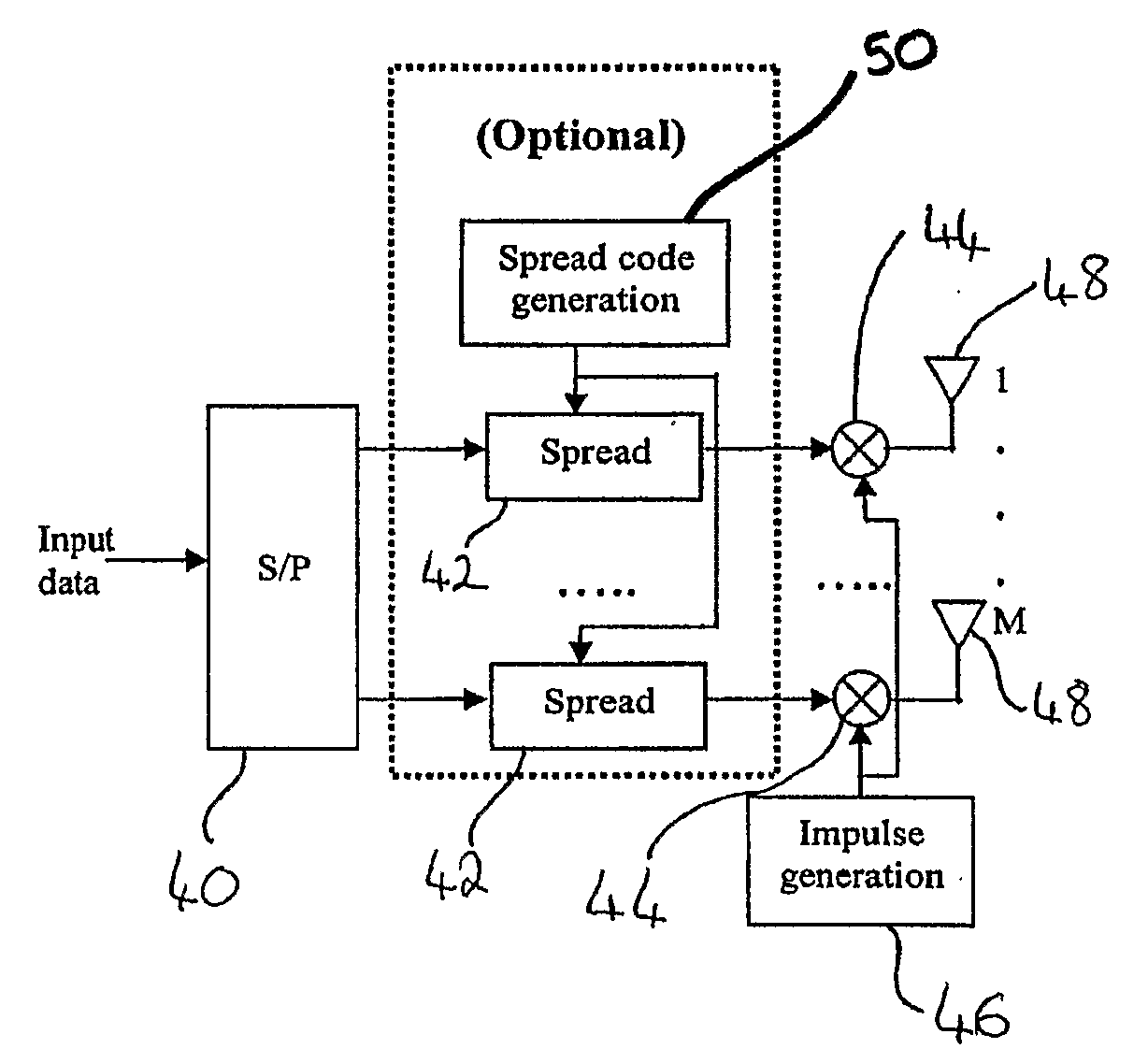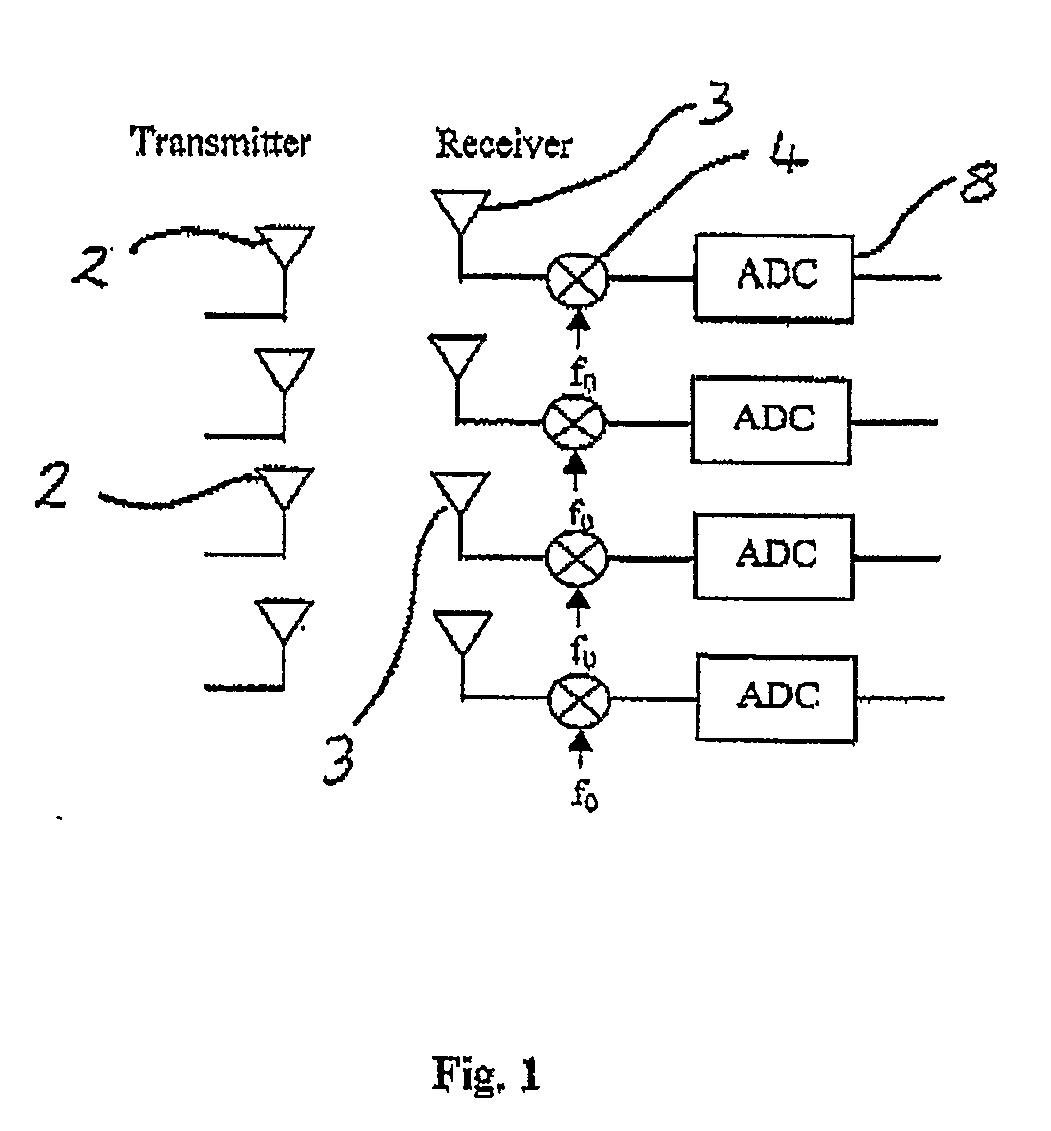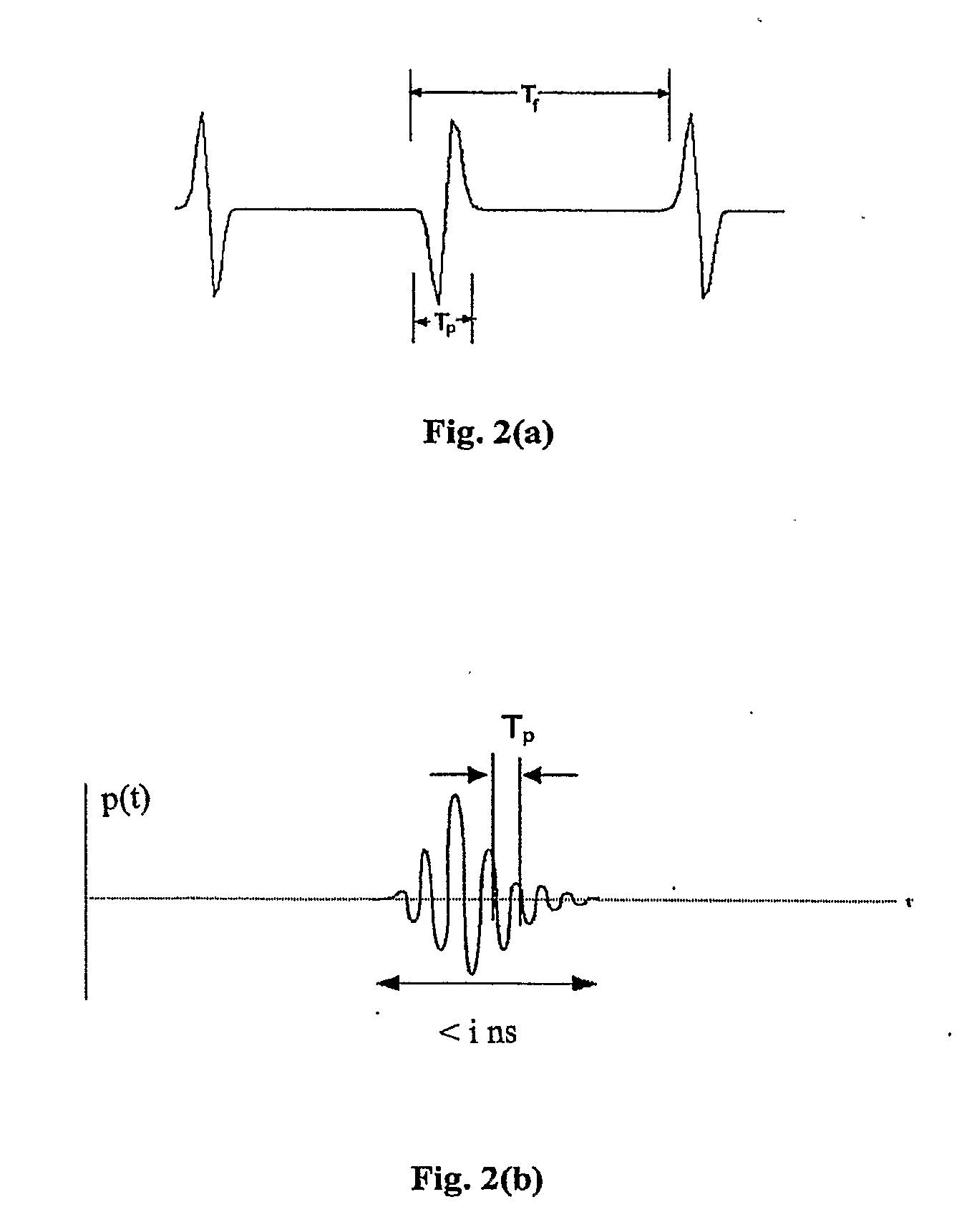Method and Transmitter, Receiver and Transceiver Systems for Ultra Wideband Communication
a technology of transmitter and receiver, applied in the field of methods and transmitter, receiver and transceiver systems for ultra wideband communication, can solve the problems of limiting the possible data transmission rate of band-limited systems, degrading the system's performance, and most conventional radio systems are bandwidth limited, so as to improve the system capacity, reduce interference, and increase the data transmission rate
- Summary
- Abstract
- Description
- Claims
- Application Information
AI Technical Summary
Benefits of technology
Problems solved by technology
Method used
Image
Examples
Embodiment Construction
[0089]The present invention will be described in connection with FIGS. 2a to 15(b).
[0090]A preferred embodiment of the present invention uses ultra wideband (UWB) pulses for transmitting information. In general, UWB systems transmit sequences of information carried on very narrow width (Tp) pulses that are spaced at regular intervals depending on the modulation. These pulses can be formed using a single basic pulse shape generator and are very short in duration, typically much shorter than the interval corresponding to a single bit or chip. The interval between two adjacent pulses is called the pulse repetition period (Tf).
[0091]FIG. 2(a) shows an example waveform of a pulse sequence generated by a UWB transmitter, for example, in an embodiment according to the present invention. A stream of pulses is shown, each pulse comprising a positive and negative excursion. The order in which the said excursions occur indicates the level of the data pulse being passed through the transceiver....
PUM
 Login to View More
Login to View More Abstract
Description
Claims
Application Information
 Login to View More
Login to View More - R&D
- Intellectual Property
- Life Sciences
- Materials
- Tech Scout
- Unparalleled Data Quality
- Higher Quality Content
- 60% Fewer Hallucinations
Browse by: Latest US Patents, China's latest patents, Technical Efficacy Thesaurus, Application Domain, Technology Topic, Popular Technical Reports.
© 2025 PatSnap. All rights reserved.Legal|Privacy policy|Modern Slavery Act Transparency Statement|Sitemap|About US| Contact US: help@patsnap.com



